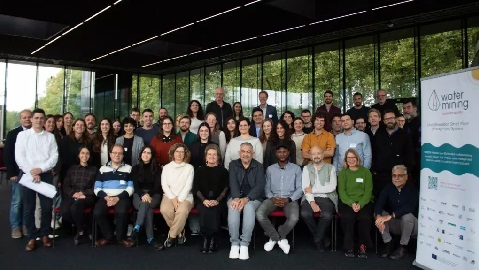WATER-MINING paves the way for innovation in water circularity
The contributions of ICTA-UAB’s WATER-MINING project to circular water solutions and technologies have opened up innovative pathways in the international quest for more sustainable water management amid increasing climate and water security challenges.

The EU-funded project, which officially comes to a close in December 2024, has demonstrated multiple advances in water management with a circular economy approach. Solutions were tested at six case study sites across Europe – Lampedusa (Italy), Almería (Spain), Faro (Portugal), Larnaca (Cyprus) La Llagosta (Spain), and Rotterdam (The Netherlands). ICTA-UAB researchers Louis Lemkow, as coordinator, Gonzalo Gamboa and Berta Roset are participating.
Project coordinator Patricia Osseweijer, professor of biotechnology and society at Delft University of Technology (TU Delft) said: “A unique feature of the project was the full integration of (local) stakeholder perspectives and economic, social and environmental impacts in the design and execution of each case study. This was also supported by smart monitoring and augmented reality tools. This provides great insights in societal embedding and increases both adoption as well as providing options for adaptational needs in future circumstances.”
Mark van Loosdrecht, professor of environmental biotechnology at TU Delft and the creator of the Nereda wastewater treatment process, lauded the project’s contributions to the sector: “WATER-MINING has contributed greatly to exploring market potential and technical scaling up of solutions for circular water systems.”
Considerable progress was made in the scaling up and marketing of Kaumera, a bio-based polymer derived from the Nereda purification process, and many of the case study results exceeded expectations in both the recovery of water and valuable materials from treatment processes.
Some Key Results
The recovery of water from treatment processes was a core focus of the WATER-MINING project case studies, given the growing need to conserve the increasingly precious resource. The resulting freshwater can be re-used in sectors like agriculture and industry.
- The case studies located at the Larnaca sewage treatment plant (CS4) and in La Llagosta (CS5) demonstrated a water recover rate of around 100%.
- Traditional desalination technologies can be energy intensive, often requiring fossil fuels to power the processes, which can complicate sustainability goals:
- The case study in Almería (CS2) demonstrated solar power as a viable energy source for the desalination of sea water.
- The case study in La Llagosta managed to reduce energy consumption in the treatment process by roughly 25%.
- The case study in Almería (CS2) demonstrated solar power as a viable energy source for the desalination of sea water.
As well as water, case studies were focused on the recovery of valuable material such as phosphates, minerals, and salts from water treatment processes. These products offer multiple uses in various sectors and contribute to diversifying the value chains that can spring up around water treatment schemes.
- The case study site in Lampedusa (CS1) used nano-filtration technology to extract magnesium and calcium with a purity of 95% and 50% respectively, with a removal efficiency rate of 97% and 95%. CS1 also obtained sodium chloride with a purity above 99% by passing high concentrate brine through a Multiple Effect Distillation system.
- The case study in Larnaca (CS4) also obtained a >99% recovery of a high purity saturated stream in NaCL or NaCL crystals.
- Case studies in Larnaca (CS4) and La Llagosta (CS5) also worked on the recovery of phosphates from the water treatment process, which can be used in agricultural fertilizers and reduce the risk of eutrophication in natural bodies of water.
The WATER-MINING Project also contributed to the further development of already existing innovations. An example of this was the further scaling up and marketing of Kaumera, including at the case study in Faro (CS3).
- The project advanced the application of Kaumera in agriculture and its proof of concept in fire retardant applications as well as findings in the boundary conditions from aerobic granular sludge technology in industrial wastewater.
- It also made progress in the development of a full refinery approach for waste sludge-based recovery based on Kaumera production, phosphate recovery, and green gras production by alkaline digestion.
- The development of a framework for techno-economic-environmental assessment of concepts for integrated low-energy water production and material resource recovery.
For more results highlights from the WATER-MINING project, check out the case study factsheets available here.
To boost the commercialization of such products, the WATER-MINING project launched a marketplace designed for water treatment plant owners, business owners and customers. The marketplace can be accessed here.
Final stretch
The WATER-MINING project was coordinated by TU Delft and brought together 38 private and public entities from 12 countries. Although it ended in 2024, a final congress on ‘Water Smart Economy & Society’ will be held between 25-28 May 2025 in Rotterdam, The Netherlands.